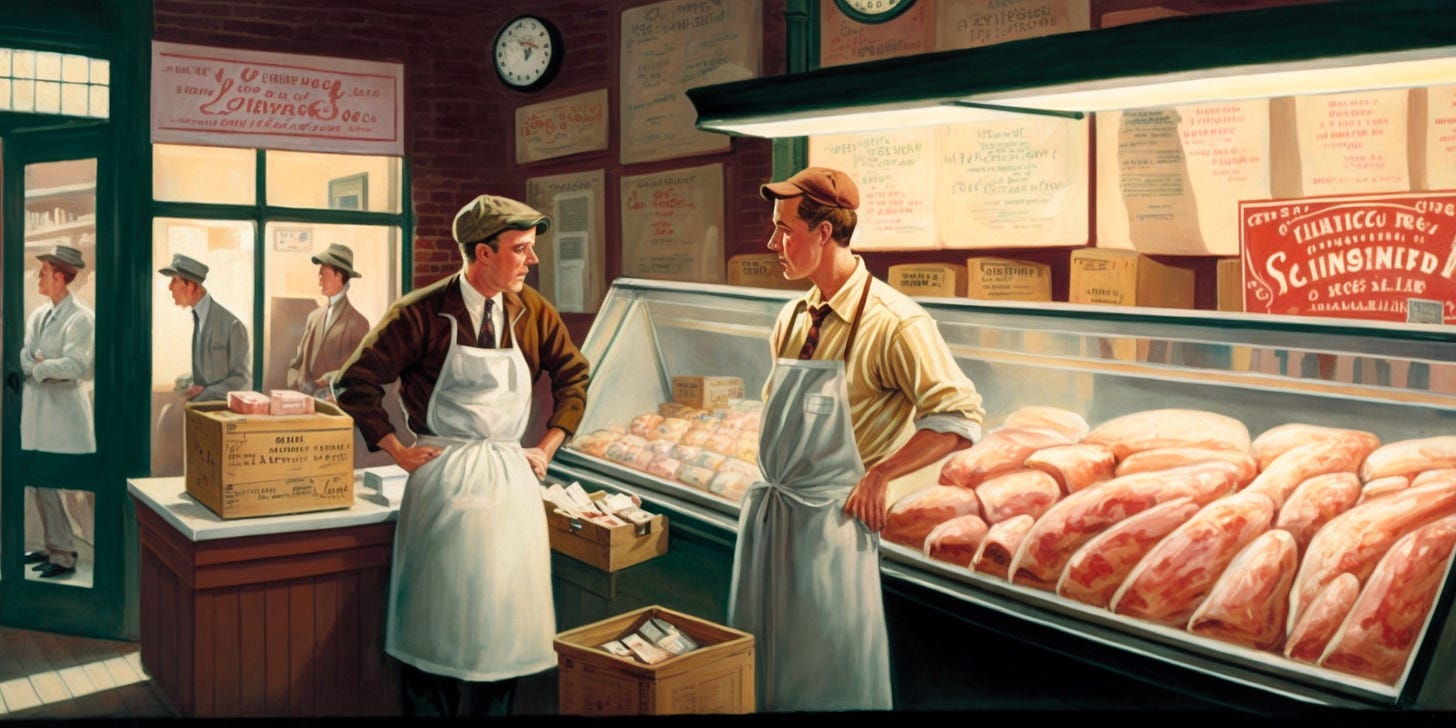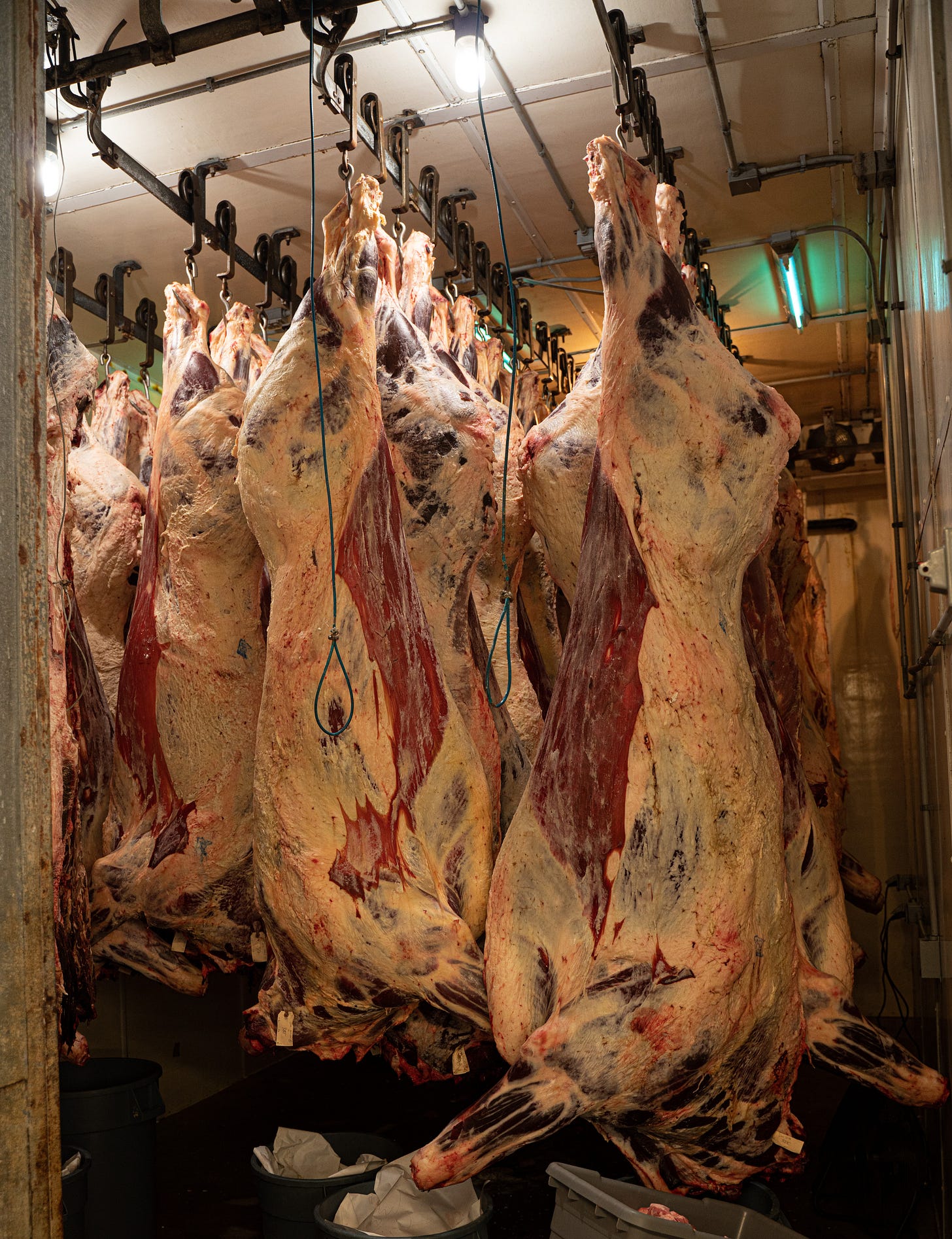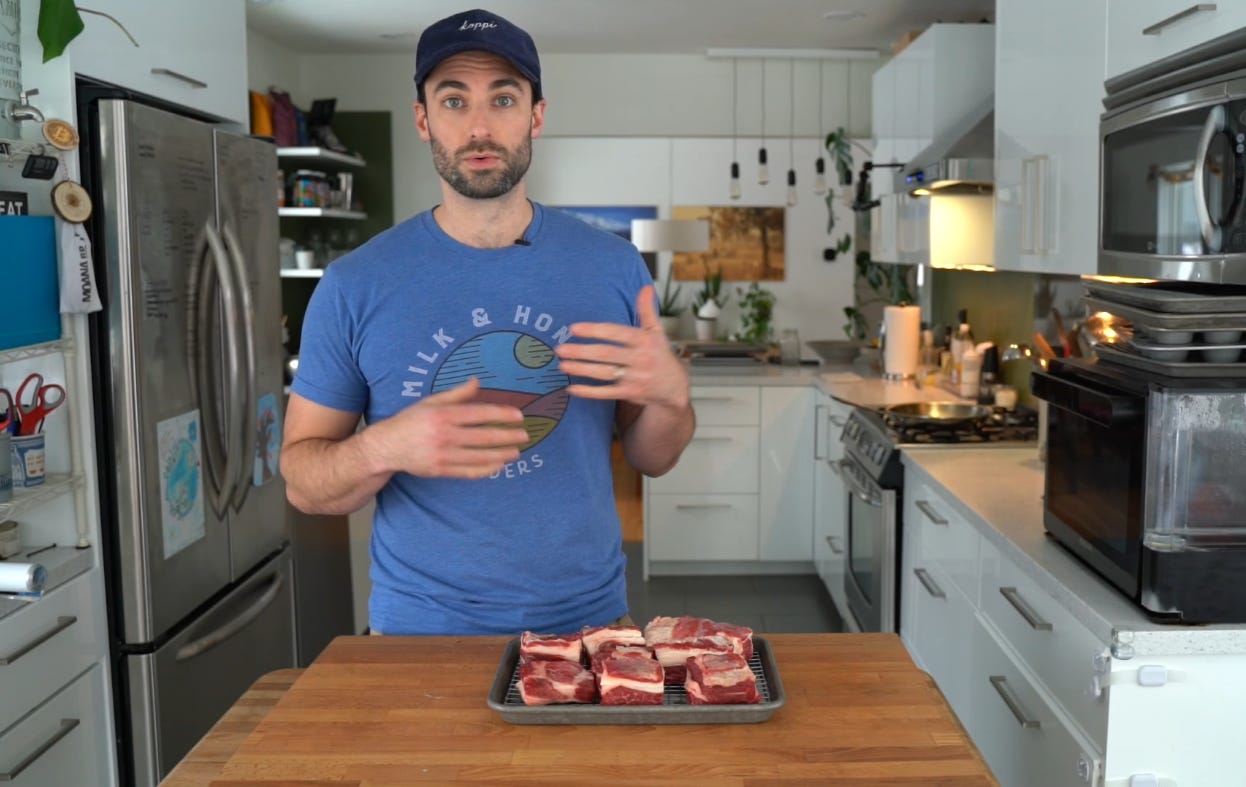Working with the Butcher
Avoid common pitfalls and make sure you get everything you paid for
In previous articles, we discussed the reason why you would want to buy in bulk, as well as how to connect with farmers in your area. Once you have decided on a farmer to work with and have reserved a share of their beef, it is time to connect with the butcher.
Unlike the farmer that is competing for your business with a range of other farmers in your area, there is most often a lack of small butcher operations. After decades of being squeezed out by large-scale meat packers, the independent butcher is in high demand amongst small farmers and ranchers who want to sell their beef directly to consumers, as it offers them a much higher profit margin.
And while you have a lot of flexibility in deciding what farmer to source your meat with, most farmers have already reserved a slaughter slot at a specific butcher for the animal they are planning to sell your beef from, and those slots are usually booked months in advance. If you like the farmer and plan to buy from them again but were disappointed in the quality of the butchering work, be sure to provide that feedback to the farmer so they can potentially seek out an alternative partner.
Here's a rough outline of how the bulk buying process plays out:
You make a down payment to the farmer to reserve your share of beef
Once the animal is slaughtered, the butcher will share the hanging weight of the carcass with the farmer, who will use that number to calculate the cost of the meat
Either the farmer or butcher will share cut sheet with you and ask you to fill it out
Once you provide instructions, the butcher will inform you when they plan to cut and when you can pick up
At pickup, you pay butcher for their cutting services and take delivery of meat
Cut sheets vary from butcher to butcher, but most of the main themes remain. We won’t get into the details of the actual cut sheet today, that will be in next month’s issue (suffice to say, there is a lot to cover).
If you have a butcher that seems approachable and willing to accommodate requests, here are a few things you can ask about to improve the final product you take home.
Ask for everything (or ye shall not receive)
If you don't explicitly ask for organs, fat and soup bones, you probably won't get them - in fact, many cut sheets don't even mention these options.
Organs - includes the heart, liver, tongue, kidney. It’s also worth asking if anyone else included in that beef wants organ meat - if they don’t you might be able to get it all at no additional cost.
Fat - if you ask to keep the fat, they will just break it down into large chunks and put it in a box. Some butchers will run the fat through their meat grinder, making the rendering process far easier. I recommend 5 lbs. packages for ground fat.
Other cuts - soup bones and oxtail are wonderful ingredients for stews and making your own stock. Beef cheeks are an incredibly tender cut, although some butchers aren’t allowed to salvage them (depends on the process they utilize to stun/kill the animal).
The wrap vs. the vacuum seal
Wrapping in butcher paper is the standard option offered by most butchers, however some will offer to vacuum seal your cuts for an additional fee. While this will cost extra, there are a number of upsides to vacuum sealing:
Much better at staving off freezer burn, extending the life of your frozen cuts
Easier to see what kind of cut you are working with before deciding to thaw it out
Allows you to thaw the cut of meat in water, which can speed up the process
One note however is that vacuum sealing makes the cuts of meat susceptible to light exposure, but if you’re only opening your chest freezer 1-2x per week to replenish your kitchen freezer, then this won’t be an issue.
The long hang
Dry aging is a critical part of the processing of an animal. This process involves storing the carcass in a refrigerated environment with controlled humidity, ventilation and UV lighting. For the natural enzymes that occur in beef to break down the muscle tissue and improve the texture of the meat, dry-aging needs to last at least 14 days. However, between 14-21 days is where the flavors really start to mature and intensify, resulting in a much tastier end product.
Most butchers will plan to hang sides of beef in their aging cooler for 14 days. You can try to ask if they will hang it for longer, but this request needs to be made prior to the animal arriving at the butcher. The reason being that once the side of beef is on the rail, moving it around can be a nuisance for the butcher.
Next month’s issue will be a more detailed breakdown of the cut sheet, including examples of different templates and my personal recommendations for how to approach them. Enter your email below if you’d like to be notified when each new article goes live.
The Purpose of the Primal Cut Sheet
This is part of an ongoing monthly series that aims to provide you with all of the information you will need to start buying high-quality beef in bulk directly from a local producer. Future topics will include how to connect with your local producers, deciding between grain and grass-finished beef, and, finally, a full breakdown of a butcher’s cut sheet to help you get the most value from your purchase.
If you’re looking to buy in bulk right away and would like some personalized assistance, I also offer 1:1 consultations to help you navigate cut sheets or answer any other questions you might have:
By being a paid subscriber, you help support my efforts to bring most of this content to the public free of charge and free of advertisements. Thank you.








